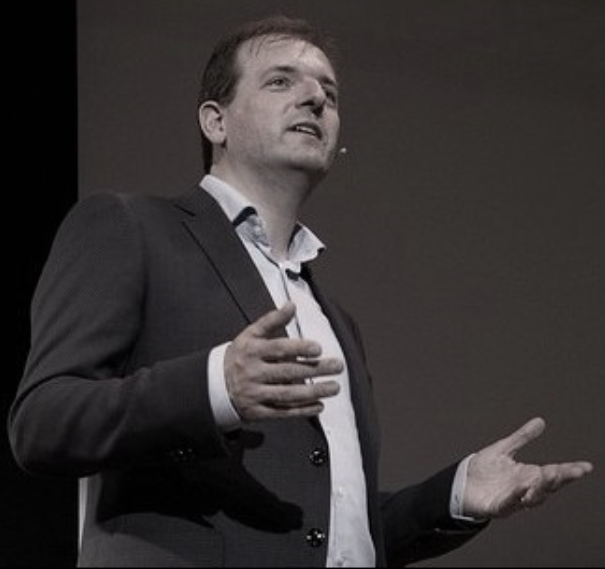Have you ever sat through a presentation where every minute feels like an hour? Where you have trouble focusing and your mind wanders? Where, even though the content might be OK, the mental effort it costs you to remain focused is just too great?
This is a tragedy because the speaker has clearly put time into preparing this presentation, to share what they believe is useful content. But if the audience is not paying attention, it simply doesn’t matter how great the content is because nobody’s listening.
Why are some presentations easy to listen to and some really hard? Today I want to share with you a simple technique which you can implement during your next presentation. It is so easy to do you will wonder why more people don’t do it. And when I tell you, you will realise that I also use it in my articles (and have already used it). Can you already see what it is? Am I giving you a clue right now?
Ask!
The simplest way to get an audience attention? Ask a question!
Sounds simple doesn’t it? (See? I do it all the time. But you’ve spotted that by now, right?) When you ask a question, it’s like you suddenly switch on a light in the audience’s brains. Try it next time you stand in front of a group. If you ask a question (and I’ll show you how to in a moment) you will see them immediately give you more attention. As a presenter, it’s amazing to see that effect!
So what kind of questions can you ask? (Another one! It’s getting more obvious, isn’t it?) There are three types of questions I use and they are all really easy to implement.
Isn’t it?
The first is simply to turn a normal sentence into a question, isn’t it? You can simply add a couple of words to the end of almost any sentence to turn it into a question, can’t you?
Now this would get annoying if I kept doing it, wouldn’t it? But I would keep your attention, wouldn’t I?
OK, enough, you get the picture (and here mentally you add “don’t you?” to the end of the sentence yourself because by now you’re under my spell 🙂 ). This is something which you can put into practice the next time you stand in front of a group (or even in a one-on-one conversation). Try alternating between asking questions and not asking questions and see how the audience responds.
And now?
You can use the second technique to introduce the next topic or slide of your presentation. Again, this is also really easy to use. During your preparation, consider what question the next slide of your presentation answers. (By the way, this is also a really good part of preparation – if you’re not clear on this, do you really need the next slide?)
For example, the question might be:
- So what is the architecture of this component?
- Why are we expecting an increase in sales in the next quarter?
- How can we prepare our staff for the upcoming conference?
Once you’ve worked out that question, all you need to do is ask it before showing the slide. It’s so simple, isn’t it? Just ask the question, eg “How can we reduce expenditure next year?” and then click you display the answer on your slide. You’ve mentally prepared your audience for the information you are giving them and, in doing so, you’ve helped them to focus on your content.
This also helps you develop the flow of your presentation. Are the questions you are asking in a logical order? Are they the questions that your audience wants to have answered? (For more on this last question, see my previous article.)
Who here sees the benefit of these questions?
The final way I ask questions is when I want to get feedback from the audience. Note that I rarely do this to get information from the audience, though occasionally I do. The main reason is to get their attention. And this way is the most powerful because I get their bodies to move, without the audience necessarily being consciously aware of it.
I ask a “polling” question. These begin with the same two words: “who here…?”:
- Who here thinks we had earnt more than we spent in the last quarter?
- Who here feels prepared for the upcoming conference?
- Who here gets nervous when they have to give a presentation?
And here’s where you can see the difference between the amateur presenters and the pros. An amateur presenter will then say, “Hands up please if you agree.” A professional presenter will, after asking the question, simply raise their hand in the air. This visual queue is enough. The audience will then know that if they agree they need to raise their hands also. And by getting people to move their bodies, you will begin to influence your audience, which will make you more persuasive. But that’s a topic for another time.
Before trying these out, you’ll probably want to see if these work in real life, right? So take a look at my TEDxEindhoven talk, “How to present to keep your audience’s attention”, and see it for yourself. In the fifteen minute talk, how many questions do you think I ask?
– Mark Robinson is a senior software engineer at TMC. In addition, he has his own business, Mark Robinson Training, via which he gives workshops, presentations and coaching to help people communicate more effectively to groups. With his engineering background, he is particularly suited to supporting the international, technology community of Eindhoven. He has spoken at TEDxEindhoven in 2016 and is now a TEDxEindhoven speaker coach. –
















